Even while low-light indoor plants are an option if you don’t have many windowsills that receive a lot of sunlight, lighting conditions might be a difficulty for indoor gardeners. They are simple to maintain for, require minimal upkeep, and little light.
Top 11 Low Light Indoor Plants
- Lucky Bamboo
- Schefflera Arboricola
- Snake Plant
- ZZ Plant
- Silver Pothos
- Dragon Tree
- Peace Lily
- Maidenhair Fern
- Nerve Plant
- Philodendron
- Monstera
01. Lucky Bamboo Plant
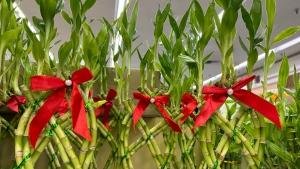
The Lucky bamboo plants may be grown in soil or water and are great for workplaces and residences. They frequently feature tiny green leaves scattered along sculptural or braided stems. Lucky bamboo plants are a crucial component of feng shui practice and are believed to bring luck and wealth, especially if they were given to you as a present.
They have earned a reputation for being nearly invincible. Preferring some light, lucky bamboo grows successfully in practically full shade conditions. They are harmful, keep them away from animals.
These common plants come in a wide range of sizes and forms, so they may be used in any setting. They grow quite slowly and thrive in dim light.
- Native Area: Central Africa
- Common Name: Dracaena Sanderiana
- Mature Size: 1 to 5 ft. tall, 1–2 Ft. Wide.
- Family: Asparagus
02. Schefflera Arboricola

The Schefflera Arboricola is a large league of tropical plants that includes two species that make wonderful tropical houseplants. Plants called miniature umbrella plants, or Schefflera Arboricola.
As they grow slowly, you don’t have to be concerned about them taking over a tiny space, making them a low-light option. They can’t really be placed anyplace other than the ground, so if you have cats and dogs, this might not be the ideal plant for you.
They have tall, glossy, oval, umbrella-shaped green leaves that hang gently from the stem in the middle. An immature Schefflera has four to six leaflets, but an adult can have 12 to 16 leaflets from a single stem.
- Native Area: Taiwan
- Common Name: Schefflera, Umbrella Plant
- Mature Size: 4 to 6 Ft. tall, 3 to 6 Ft. Wide
- Family: Araliaceae
03. Snake Plant

The Snake plant, also known as Dracaena trifasciata, is one of the most well-liked and resilient types of houseplants. It was categorized botanically as Sansevieria trifasciata up to 2017. There were just too many parallels between it and snake plant species.
The plant is six inches to eight feet tall and has rigid, sword-like leaves. Although the color of snake plants can vary, many feature green striped leaves that often have a yellow border. These plants are simple to cultivate and sometimes practically unbreakable.
They will flourish in an area of the house that is nearly dark or quite bright. Snake plants often develop slowly in artificial lighting, but if they are given a few hours of direct sunlight, their development will quicken.
- Native Area: West Africa
- Common Name: Dracaena trifasciata
- Mature Size: 6 to 8 Ft. tall.
- Family: Asparagaceae
04. ZZ Plant

The ZZ plant is a tolerant plant that can tolerate low light levels and inconsistent watering, making it the perfect choice for forgetful plant owners.
As it grows slowly, it won’t require repotting or division for many years. The lush, glossy leaves complement any décor well. ZZ thrives under fluorescent lighting, which makes them a common indoor plant in offices. Plants reach a height of 16 to 28 inches.
Even the most green-thumbed gardeners can maintain ZZ plants’ low-maintenance, simple-to-care-for houseplants with little effort. Every two weeks, all zz plants require sufficient hydration and enough sunshine. ZZ plants have naturally glossy leaves that turn dull as a result of a buildup of dust.
- Native Area: Africa
- Common Name: Zamioculcas zamiifolia, Zanzibar gem, eternity plant
- Mature Size: 2 to 4 Ft. tall & 2-4 Ft. Wide
- Family: Araceae
05. Silver Pothos

The Silver pothos is a beautiful houseplant with silver leaves that are shaped like hearts and have a soft satin-like touch. It is deep greenish-blue in hue and glossy, with flecks of silvery-gray. Each leaf is unique!
This tropical vine is exactly as simple to cultivate as its pothos cousins, yet having a startlingly distinctive appearance. Silver pothos is a variation of Syndapsus pictus, whereas Golden Pothos and Marble Queen are cultivars of Epipremnum aureum, the common pothos vine.
They are of of the simplest houseplants to cultivate and do well in the bright, indirect light and room temperature of most buildings.
- Native Area: Thailand, Philippines
- Common Name: Satin pothos, silk pothos
- Mature Size: 3 to 10 ft. tall
- Family: Araceae
06. Dragon Tree
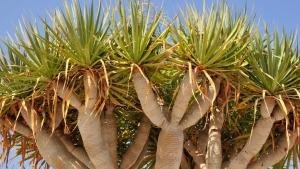
The Dragon Tree, or more commonly known as Dracaena marginata. A beautiful shrub with green leaves that look like swords with crimson edges. The striking thorn tree, a native of Madagascar, is renowned as a great introduction plant for home gardeners.
They are nearly unbreakable, drought resilient, and require little maintenance. These are slow-growing plants that can be planted at any time of the year. Small white flowers appear on this plant in spring.
It is often grown indoors in pots and pruned to a height of 6 feet or less. Keep pets away from dragon trees as they are poisonous to animals if eaten.
- Native Area: Madagascar
- Common Name: Dragon plant, Madagascar dragon tree
- Mature Size: 15 to 20 ft. tall, 3 to 10 ft. wide
- Family: Asparagaceae
07. Peace Lily

The Peace lily is a tropical flowering plant of the genus Spathiphyllum. Many people cultivate peace lotuses indoors when they are outside their hardiness zone. There are many varieties of peace lotus within the genus. Peace lotuses usually have very large, glossy, oval leaves.
When grown indoors, this can vary, they usually bloom in spring. A robust peace lily blooms twice a year, producing flowers that last for several months. Popular indoor low-light plants that can withstand neglect include peace lilies.
They are resilient when planted in gardens in tropical areas. Peace lilies may be bought and brought inside the house at any time of the year, provided you take care of them indoors.
- Native Area: Central America ,Asia
- Common Name: Spath lily
- Mature Size: 1 to 4 ft. tall, 1 to 4 ft. wide
- Family: Araceae
08. Maidenhair Fern

The Maidenhair fern leaves are smaller than other fern species and have delicate fan-shaped leaf segments. They are usually grouped together on wiry, black stalks.
This plant is found growing between rocks and in crevices. where moisture from nearby water sources sustains them. These plants are considered slow-growing ferns. It usually takes about three years to reach their full mature size.
They are visually gorgeous in all stages of development when alive. Planting ferns outside at any time of the year can ensure their success if you live in the correct USDA zone.
- Native Area: North America
- Common Name: Delta maidenhair fern
- Mature Size: 1 to 2 ft. tall, 1 to 2 ft. wide
- Family: Pteridaceae
09. Nerve Plant
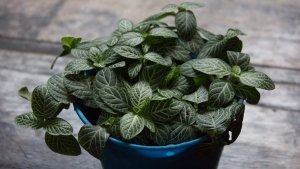
The Nerve plants are commonly grown as potted houseplants. A very widely spreading perennial evergreen with dark-green leaves with ovate fine veins. While silvery-white is the most common vein color, you can also easily find variations with veins in red, pink, white, and green.
Nerve Plant typically reaches a height of 3 to 6 inches with a back spread of 12 to 18 inches. when planted as a houseplant, the slow-growing plant rarely blooms. It occasionally produces reddish or yellowish white spikes.
The plant can be cultivated as an occasional creeping ground cover in areas with filtered light in suitable zones. Considering that it is a tropical plant that develops naturally in the humid, vibrant shadow of tropical woods.
- Native Area: South America
- Common Name: Mosaic plant, Fittonia
- Mature Size: 3 to 6 in. tall, 12 to 18 in. spread
- Family: Acanthaceae
Also Read: Bromeliad Plant
10. Philodendron
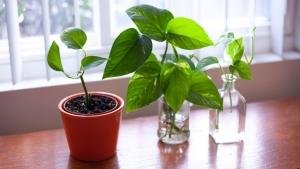
The Philodendron genus contains hundreds of species of spectacular leafy plants. Philodendrons are great for bringing their natural tropical flare into your home because of their typically large, glossy, green foliage.
There are two varieties of philodendron to choose from: vining and non-climbing, and both are common houseplants famous for their simple growth patterns. Several-foot-tall vining types usually require a support structure to climb up, such as a trellis or basket perimeter.
Non-climbing types are ideal foliage plants for pots because they grow upright. Philodendrons often have a fast growth rate. Philodendrons are a fantastic choice of plants to clean the air in your home.
Houseplants can usually be started at any time of the year, although spring is the best time to grow them. It is toxic to humans and animals alike if ingested.
- Native Area: Central America, South Africa
- Common Name: Philodendron spp.
- Mature Size: 1 to 20 ft. tall, 1 to to 6 ft. wide
- Family: Araceae
11. Monstera
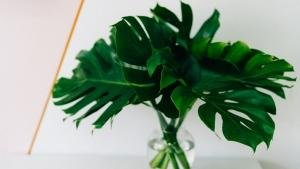
The genus Monstera contains 59 species of flowering plants that are native to the tropics of the Americas and are members of the Araceae family of plants. The name of the species, which alludes to its members’ unique leaves with built-in holes, is from the Latin for “monstrous” or “odd.”
They grow in trees up to 20 meters tall and are either herbs or evergreen vines. It uses aerial roots that act as hooks on branches to climb. These roots also penetrate the earth to sustain the plant. It is referred to as a hemiepiphyte since the plant’s roots are found both in the ground and on the tree.
They are frequently raised inside as houseplants. The most well-known member of the genus, Monstera deliciosa, is also cultivated for its edible fruit, which has a flavor similar to a cross between banana and pineapple.
- Native Area: Central America
- Common Name: Swiss-cheese Plant, Window Plant
- Mature Size: 10 to 15 ft. tall. & up to 8 ft. Wide
- Family: Araceae

